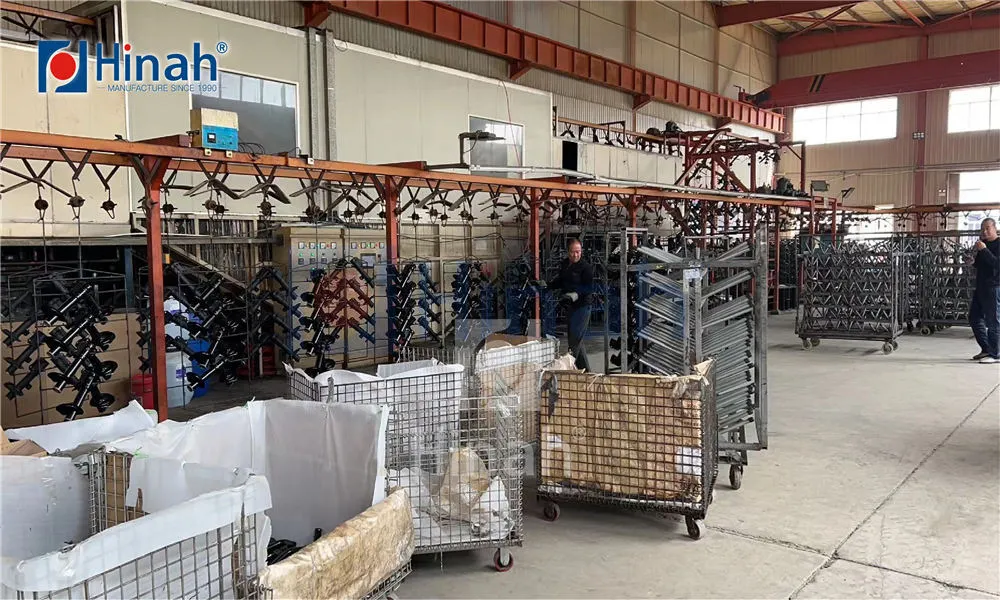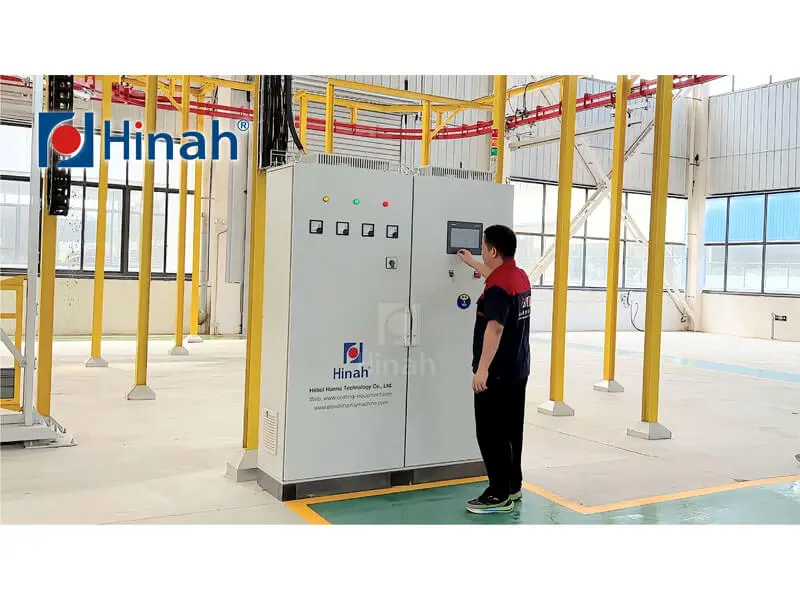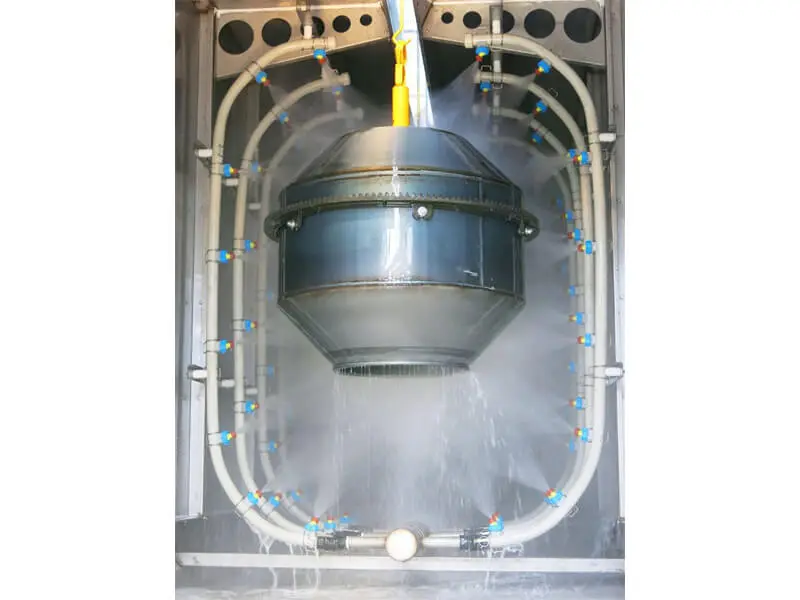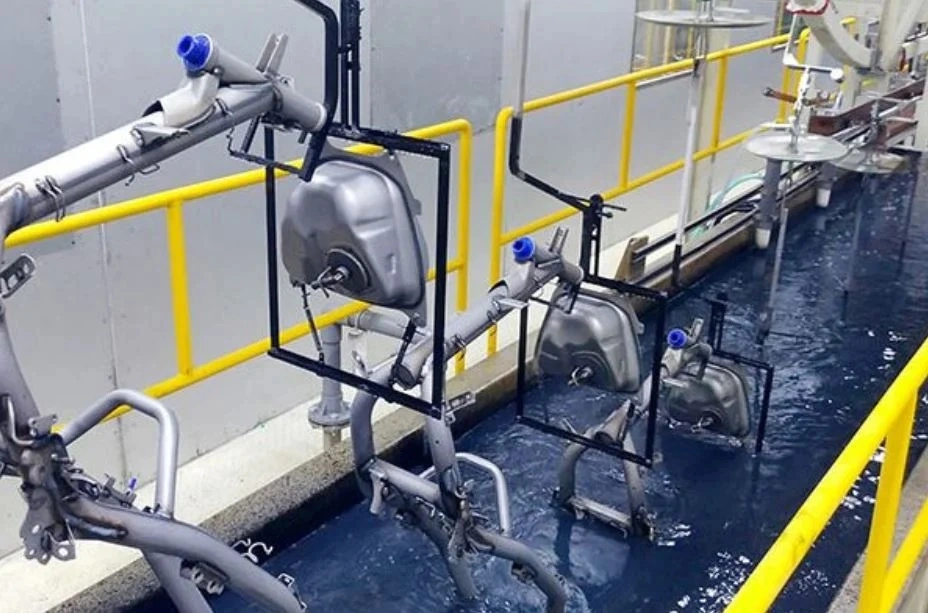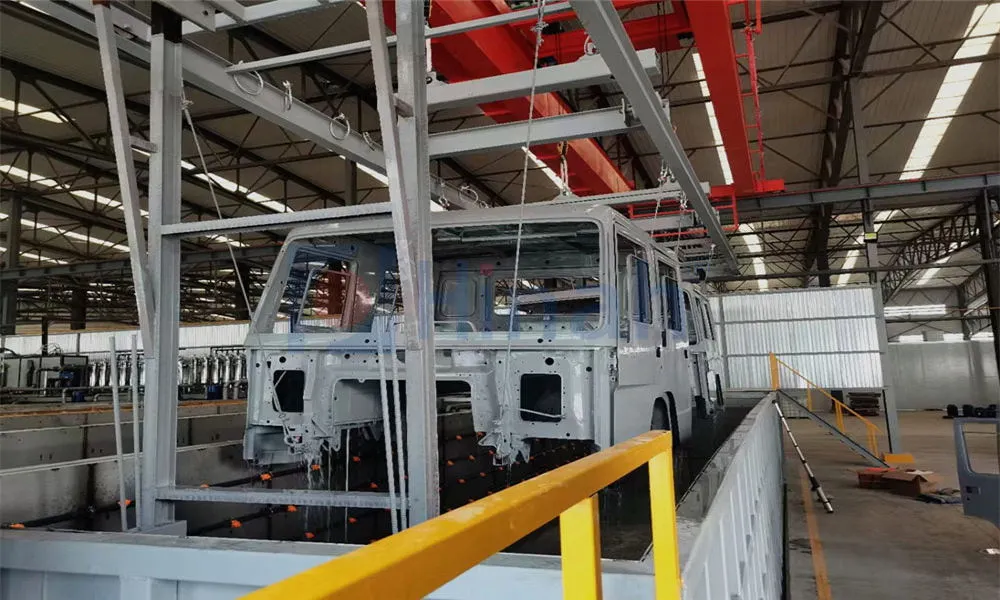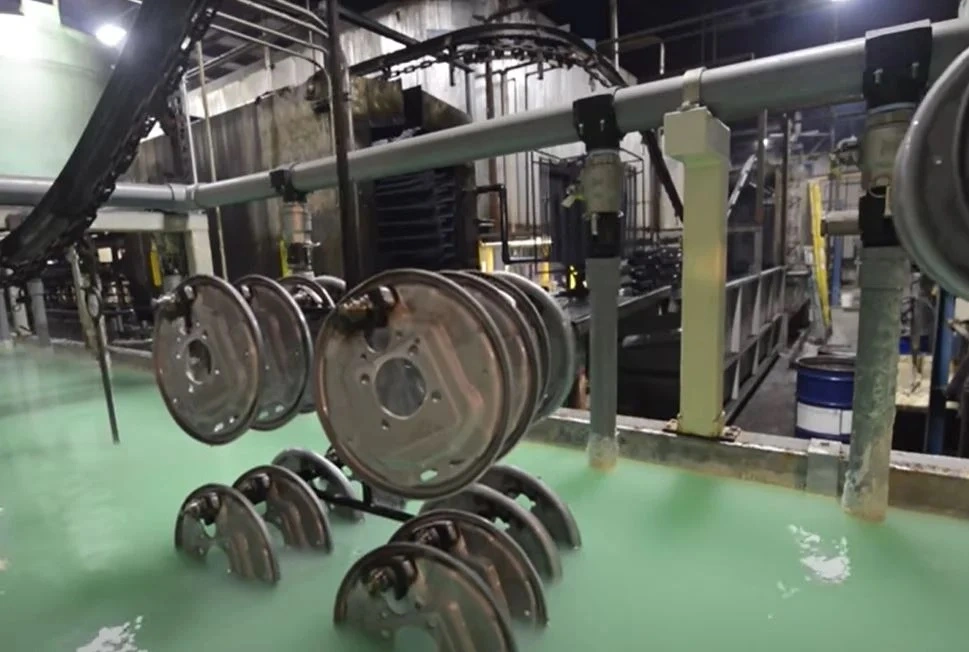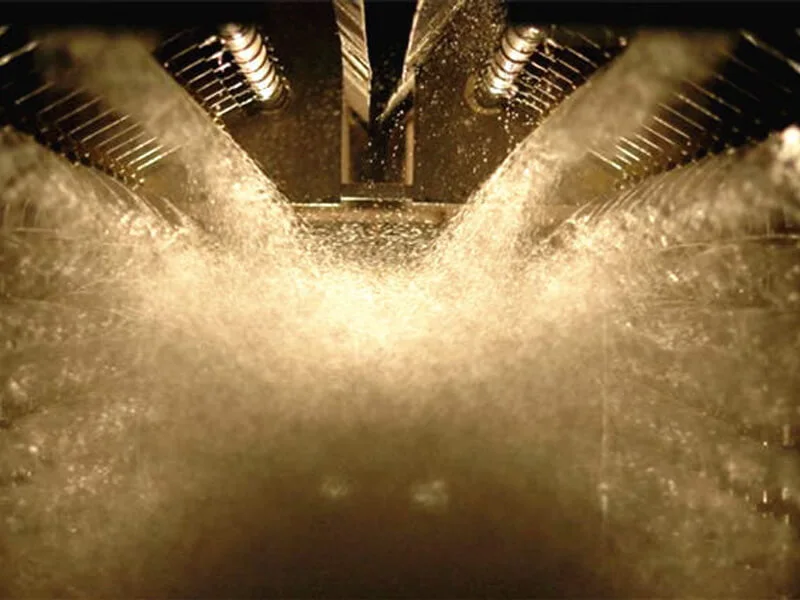In today's competitive manufacturing landscape, achieving durable, high-quality surface finishes is crucial for products across various sectors. The powder coating production line has emerged as a game-changing solution, offering efficiency, environmental benefits, and superior performance compared to traditional liquid coating methods. This comprehensive article delves into the intricacies of the powder coating production line, exploring its fundamental aspects, components, operational processes, advantages, applications, and maintenance considerations. By understanding how a powder coating production line functions, businesses can optimize their operations for better outcomes. Whether you're new to this technology or seeking to enhance an existing setup, this overview provides valuable insights into why the powder coating production line is a cornerstone of modern industrial coating.
The powder coating production line involves a systematic approach to applying dry powder to substrates, which is then cured to form a hard, protective layer. Unlike wet paints, powder coatings are free of solvents, reducing volatile organic compound (VOC) emissions and aligning with sustainability goals. As industries strive for greener practices, the adoption of powder coating production lines has surged, driven by their cost-effectiveness and versatility. This article will guide you through the essential elements of a powder coating production line, highlighting its role in transforming manufacturing processes. From automotive parts to household appliances, the impact of a well-designed powder coating production line is undeniable, making it a vital topic for professionals and enthusiasts alike.
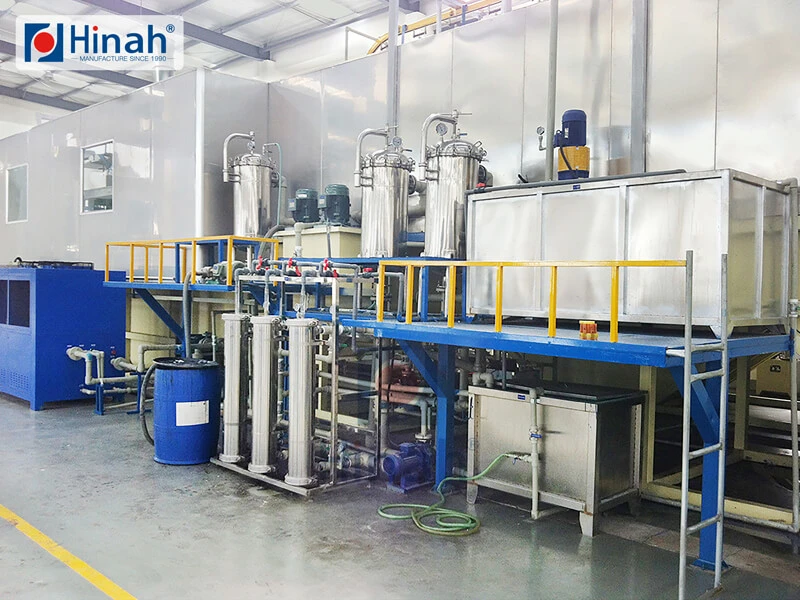
A powder coating production line is an integrated system designed for applying powder coatings to various materials, primarily metals, to create a durable and aesthetically pleasing finish. This type of production line encompasses multiple stages, including pretreatment, application, curing, and cooling, all orchestrated to ensure consistent quality. The core principle behind a powder coating production line involves electrostatically charging powder particles and spraying them onto a grounded workpiece. Once applied, the coated object is heated in an oven, causing the powder to melt and form a continuous film. This process is highly efficient, with minimal waste, as overspray can often be reclaimed and reused.
The evolution of the powder coating production line dates back to the 1960s, when environmental concerns began driving innovations in coating technologies. Today, modern powder coating production lines are automated, incorporating advanced controls for precision and scalability. Key benefits include resistance to corrosion, scratches, and fading, which prolongs the life of products. Industries rely on powder coating production lines for their ability to handle high volumes while maintaining uniformity. Understanding the basics of a powder coating production line is the first step toward leveraging its full potential, as it represents a shift toward more sustainable manufacturing practices.
In essence, a powder coating production line is not just a single machine but a coordinated sequence of equipment tailored to specific production needs. Whether for small batches or mass production, the flexibility of a powder coating production line allows for customization, ensuring that each component meets exact specifications. As we explore further, the intricacies of this system will become clear, demonstrating why the powder coating production line is a preferred choice in many sectors.
Key Components of a Powder Coating Production Line
A typical powder coating production line consists of several critical components that work in harmony to achieve optimal results. Each part plays a vital role in ensuring the efficiency and quality of the coating process. Below, we break down the main elements of a powder coating production line.
First, the pretreatment stage is essential for preparing the surface of the workpiece. This often includes cleaning, degreasing, and phosphate coating to remove contaminants and enhance adhesion. In a powder coating production line, pretreatment may involve spray washers or immersion tanks, depending on the size and type of items being coated. Proper pretreatment is crucial, as any impurities can lead to defects in the final finish, compromising the durability that a powder coating production line is known for.
Next, the application zone features powder spray booths and guns. Electrostatic spray guns are commonly used in a powder coating production line to charge the powder particles, ensuring they adhere evenly to the grounded substrate. These booths are designed with recovery systems to collect overspray, which can be recycled—a key advantage of a powder coating production line that reduces material waste and costs. Modern lines often include automated guns mounted on reciprocators or robots for consistent coverage, especially in high-volume operations.
The curing oven is another cornerstone of the powder coating production line. Here, the coated parts are subjected to controlled heat, typically between 150°C and 200°C, which melts the powder and triggers a chemical reaction called cross-linking. This process creates a hard, uniform layer. Ovens in a powder coating production line can be convection or infrared types, with the choice depending on factors like energy efficiency and part geometry. Proper curing is critical for achieving the desired properties, such as gloss and hardness.
Additionally, a powder coating production line includes conveyors to transport workpieces through each stage. Overhead or belt conveyors ensure smooth movement, maintaining a steady production flow. Cooling sections follow curing, allowing parts to solidify before handling. Finally, control systems integrate all components, enabling monitoring and adjustments for quality assurance. Together, these elements form a robust powder coating production line that can be scaled from simple manual setups to fully automated lines.
Understanding these components helps in designing or selecting a powder coating production line that meets specific requirements. Regular innovation in these areas continues to enhance the performance of powder coating production lines, making them more accessible and efficient for various applications.
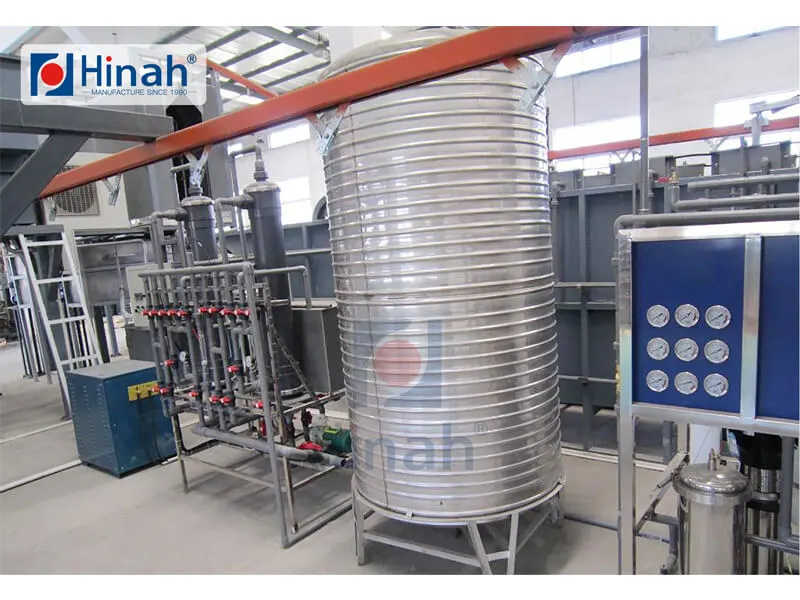
How Does a Powder Coating Production Line Work?
The operational workflow of a powder coating production line is a sequential process that ensures each coated item meets high standards. It begins with loading the workpieces onto the conveyor system, which carries them through the various stages. The first step is pretreatment, where parts are cleaned and treated to promote adhesion. In a powder coating production line, this might involve multiple stages like alkaline cleaning, rinsing, and conversion coating, all automated for consistency.
After pretreatment, the parts move to the drying area to remove moisture before coating. Then, they enter the application booth, where powder is sprayed using electrostatic guns. The electrostatic charge causes the powder to cling to the surface evenly, even on complex shapes. This step in the powder coating production line is highly efficient, with recovery systems minimizing waste. Operators can monitor the process to ensure uniform coverage, adjusting parameters as needed.
Once coated, the workpieces proceed to the curing oven. Here, heat triggers the fusion of the powder into a continuous film. The temperature and time in the oven are carefully controlled in a powder coating production line to avoid issues like bubbling or incomplete curing. This phase is where the coating gains its protective qualities, such as impact resistance and weatherability. After curing, parts are cooled gradually to set the finish, then unloaded for inspection or further assembly.
Throughout the powder coating production line, quality checks are integrated to detect defects early. Advanced lines may include automated inspection systems using cameras or sensors. The entire process is designed for repeatability, making the powder coating production line ideal for high-volume production. By optimizing each step, businesses can achieve faster turnaround times and lower costs per unit.
In summary, the efficiency of a powder coating production line stems from its streamlined workflow. From preparation to final cooling, every stage is calibrated to deliver consistent results. This reliability is why many industries invest in a powder coating production line for their coating needs, as it combines speed with quality in an environmentally friendly manner.
Advantages of Implementing a Powder Coating Production Line
Adopting a powder coating production line offers numerous benefits that make it superior to alternative coating methods. One of the most significant advantages is environmental sustainability. Unlike solvent-based paints, powder coatings used in a powder coating production line contain no VOCs, reducing air pollution and compliance with strict regulations. This eco-friendly aspect is a major driver for companies aiming to minimize their carbon footprint.
Economically, a powder coating production line is cost-effective in the long run. While initial setup costs might be higher, the efficiency gains and material savings offset this. Powder coatings have high transfer efficiency, meaning less waste, and overspray can be recycled—up to 99% in some systems. This reduces material costs and disposal expenses. Additionally, a powder coating production line often requires less energy for curing compared to liquid coatings, leading to lower operational costs.
Durability is another key benefit. Finishes from a powder coating production line are typically thicker and more resilient, offering excellent resistance to corrosion, chemicals, and UV light. This extends the lifespan of products, reducing maintenance and replacement costs. The variety of colors and textures available with powder coatings allows for customization, enhancing aesthetic appeal without sacrificing performance.
Operational efficiency is also enhanced with a powder coating production line. Automated lines can run continuously with minimal supervision, increasing throughput. The quick curing times and simplified process reduce production cycles, enabling faster delivery. Moreover, the consistency achieved by a powder coating production line ensures uniform quality across batches, which is crucial for industries like automotive and aerospace where precision is paramount.
In terms of safety, powder coatings are non-flammable and pose fewer health risks compared to liquid paints, making the powder coating production line a safer workplace option. Overall, the advantages of a powder coating production line contribute to its growing popularity, offering a blend of performance, economy, and sustainability that meets modern industrial demands.
Applications of Powder Coating Production Lines in Various Industries
The versatility of the powder coating production line allows it to serve a wide range of industries, each benefiting from its unique properties. In the automotive sector, a powder coating production line is used for coating wheels, frames, and engine parts due to its durability and corrosion resistance. The ability to withstand harsh conditions makes it ideal for vehicles, ensuring longevity and aesthetic appeal. Many automotive manufacturers rely on powder coating production lines for both OEM and aftermarket parts.
In architecture and construction, powder coating production lines apply finishes to aluminum extrusions, window frames, and structural steel. These applications demand weather resistance and color retention, which a powder coating production line delivers effectively. The aesthetic flexibility also allows architects to specify custom colors and finishes, enhancing building designs. Additionally, the powder coating production line is used for furniture, providing scratch-resistant surfaces for indoor and outdoor use.
The appliance industry extensively utilizes powder coating production lines for items like refrigerators, washing machines, and ovens. Here, the focus is on hygiene, ease of cleaning, and durability. A powder coating production line ensures a smooth, non-porous finish that resists stains and chemicals, meeting consumer expectations for quality. Similarly, in the electronics industry, powder coating production lines coat enclosures for devices, offering protection against moisture and impact.
Other applications include agricultural equipment, where a powder coating production line provides rust protection for machinery exposed to the elements, and the energy sector for coating pipelines and turbines. Even consumer goods like bicycles and sporting equipment benefit from the toughness imparted by a powder coating production line. The adaptability of these lines means they can handle various sizes and materials, from small components to large structures.
In summary, the widespread use of powder coating production lines across industries underscores their effectiveness. By enabling durable, attractive finishes, a powder coating production line supports product innovation and reliability, making it an indispensable tool in modern manufacturing.
Maintenance and Best Practices for a Powder Coating Production Line
To ensure longevity and optimal performance, regular maintenance of a powder coating production line is essential. Proper upkeep minimizes downtime and maintains quality standards. Key maintenance tasks include cleaning the pretreatment system to prevent clogging and contamination. In a powder coating production line, residues can build up in tanks and nozzles, so periodic flushing and chemical checks are necessary. This helps avoid defects like poor adhesion or blistering.
The application equipment, such as spray guns and booths, requires attention to maintain efficiency. Guns should be cleaned daily to prevent powder buildup, which can affect electrostatic charging. Booths and recovery systems need regular inspection to ensure filters are not saturated, as this can reduce reclaim rates. In a powder coating production line, automating some cleaning processes can reduce labor, but manual checks remain important for spotting issues early.
Curing ovens in a powder coating production line must be monitored for temperature consistency. Calibration of sensors and heaters should be done routinely to avoid under- or over-curing. Conveyor systems also need lubrication and alignment checks to prevent jams or missteps that could disrupt the flow. Implementing a preventive maintenance schedule for the entire powder coating production line can identify potential problems before they cause major failures.
Best practices extend beyond maintenance to operational protocols. For instance, training operators on proper handling and troubleshooting for the powder coating production line enhances efficiency. Using high-quality powders suited to the specific application can improve results. Additionally, implementing quality control measures, such as regular thickness testing and adhesion checks, ensures the powder coating production line produces consistent output.
Environmental considerations are also part of best practices. Proper disposal of waste from the powder coating production line, such as spent pretreatment chemicals, is crucial for compliance. Energy-efficient upgrades, like LED curing or heat recovery systems, can make the powder coating production line more sustainable. By adhering to these guidelines, businesses can maximize the ROI of their powder coating production line, ensuring it remains a valuable asset for years to come.
The powder coating production line represents a significant advancement in surface finishing technology, combining efficiency, durability, and environmental benefits. From its key components to diverse applications, this system offers a reliable solution for modern industries. By understanding its workings and maintaining it properly, businesses can harness the full potential of a powder coating production line. As technology evolves, we can expect further innovations in powder coating production lines, making them even more integral to sustainable manufacturing. Whether you're investing in a new line or optimizing an existing one, the insights shared here highlight why the powder coating production line is a smart choice for achieving high-quality finishes.
In conclusion, the powder coating production line is more than just equipment—it's a strategic investment that drives quality and sustainability. Embracing this technology can lead to long-term success in a competitive market.


